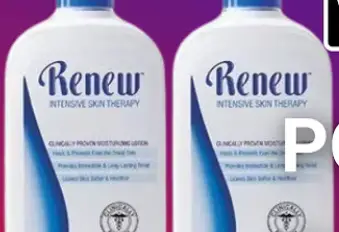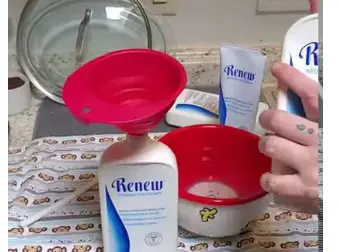I’ve been using Melaleuca Renew Intensive Skin Therapy Lotion for months, and while my dry skin loves it, my wallet’s been giving me side-eye. At $20-$30 for a 20-ounce bottle, it’s pricier than many drugstore lotions.
Why the high cost? In this article, I’ll break down the reasons behind Renew’s price, from its premium ingredients to its MLM structure, using my experience and research. If you’re wondering whether it’s worth the splurge, stick with me—you’ll get the full scoop and decide for yourself!
Key Reasons Melaleuca Renew Lotion’s High Price
After digging into Renew’s cost, I’ve pinpointed several factors that drive its price tag. Below, I’ll list these reasons and explain each in detail, sharing how they impact the product’s value and my experience as a user.
- Premium Natural Ingredients
- Specialized Formulation for Skin Conditions
- Research and Development Costs
- Multi-Level Marketing (MLM) Structure
- Brand Positioning and Exclusivity
- High-Quality Packaging
- Long-Lasting Hydration Claims
- Manufacturing and Quality Control Standards
- Targeted Marketing and Customer Education
- Membership and Subscription Model
Premium Natural Ingredients

Renew’s price partly stems from its use of high-quality, natural ingredients like glycerin, sunflower seed oil, and tea tree oil, which are more expensive than synthetic alternatives like petrolatum found in budget lotions.
I noticed my skin felt softer and less irritated after a week, likely due to these soothing components. Sourcing these ingredients sustainably and ensuring purity adds to costs, but it makes Renew feel like a luxury treat for my eczema-prone skin.
Glycerin, a humectant, draws moisture into the skin, keeping it hydrated for hours. Sunflower seed oil provides a rich source of vitamin E, which helps repair skin barriers. Tea tree oil, known for its anti-inflammatory properties, soothes redness and itching, a godsend for my flare-ups.
These ingredients aren’t cheap, especially when Melaleuca prioritizes non-GMO and ethically sourced options. Compare this to a $5 lotion with mineral oil, and you see why Renew’s cost climbs—it’s like choosing organic produce over generic.
However, I wondered if the premium ingredients fully justified the price. Some users on Reddit noted similar results with cheaper natural lotions, suggesting the ingredient quality, while high, might not be unique enough to explain the entire cost. Still, the absence of parabens and sulfates reassured me, as my sensitive skin can’t handle harsh chemicals.
Specialized Formulation For Skin Conditions
Renew is marketed as a therapeutic lotion for severe dryness and conditions like eczema, which bumps up its price. Unlike general moisturizers, it’s formulated to reduce redness, itching, and flaking, and I can attest it worked wonders on my rough elbows. This specialized focus requires costly clinical testing and dermatologist endorsements, which Melaleuca invests in heavily.
The lotion’s non-greasy texture absorbed quickly, leaving my skin soft without a sticky residue, a rare feat for heavy-duty creams. Melaleuca claims it outperforms competitors like Aquaphor by providing lasting hydration, and I found it kept my skin moisturized through a 12-hour workday. This targeted efficacy comes from blending ingredients like dimethicone, a skin protectant, with natural oils, a complex process that increases production costs.
But is it truly unique? I compared it to Eucerin’s Advanced Repair, which also targets eczema but costs $10 less. While Renew felt lighter, Eucerin held its own for mild flare-ups. The specialized formula justifies some of the price, but I suspect Melaleuca leans on its “therapeutic” label to charge a premium.
Research And Development Costs
Melaleuca invests significantly in R&D to perfect Renew’s formula, which contributes to its cost. Developing a lotion that hydrates for days without greasiness takes years of testing, and I noticed the difference—my skin stayed smooth even after skipping a day. This R&D includes clinical trials to validate claims like “improves eczema symptoms,” which aren’t cheap.
I learned from Melaleuca’s website that Renew underwent rigorous testing to ensure it’s safe for sensitive skin, a relief since I’ve had reactions to other lotions. These trials involve dermatologists, lab equipment, and consumer panels, all of which add up. Plus, Melaleuca tweaks the formula based on feedback, like improving absorption speed, which I appreciated compared to thicker creams.
Still, I questioned whether R&D costs fully explain the price. Many brands, like CeraVe, conduct similar research but sell for less. Melaleuca’s focus on proprietary blends might inflate expenses, but it’s hard to know without transparent pricing data.
Also read:My Final Thoughts Augustinus Bader The Body Cream
Multi-Level Marketing (MLM) Structure

Melaleuca’s MLM model is a big reason Renew costs more. As a member, I bought directly from their website, but the price includes commissions for distributors who sell through personal networks. This structure rewards sellers but tacks on extra costs compared to retail brands like Neutrogena.
I joined Melaleuca’s membership to access discounts, but the lotion’s base price still felt steep. Distributors often emphasize Renew’s benefits, like its eczema relief, to justify the cost, and I admit their pitch convinced me to try it. However, these commissions mean a chunk of the $25 I paid didn’t go toward the product itself but to the seller’s cut.
On the flip side, the MLM model fosters customer loyalty and education, which I found helpful. My distributor explained how to apply Renew for best results, something I wouldn’t get at a drugstore. Yet, I couldn’t shake the feeling that a direct-to-consumer model would lower the price significantly.
Brand Positioning And Exclusivity
Melaleuca positions Renew as a premium, exclusive product, which drives up its price. Unlike mass-market lotions, it’s only available through their website or distributors, creating a sense of scarcity. I felt like I was buying something special, especially when my skin responded so well. This branding strategy justifies a higher cost in consumers’ minds.
The company compares Renew to luxury creams costing $50 or more, claiming better absorption and hydration. I found this partly true—Renew outperformed a $40 French hand cream I tried, lasting longer on my dry hands. But the “exclusive” label feels like marketing hype, as similar lotions exist at lower prices.
This positioning also ties into Melaleuca’s eco-friendly and wellness-focused image. I liked that Renew’s ingredients align with clean beauty trends, but I suspect the brand inflates prices to maintain its upscale reputation, banking on loyal customers like me who value the story behind it.
High-Quality Packaging
Renew’s sturdy, pump-equipped 20-ounce bottle adds to its cost but enhances the user experience. I loved the pump’s ease—no messy scooping like with tub creams. The bottle’s durable plastic survived a drop on my bathroom floor, and the large size lasted months, even with daily use.
Melaleuca uses BPA-free, recyclable packaging, which is pricier to produce than standard plastic. I appreciated the eco-conscious design, as it aligned with my values. The pump also dispenses just the right amount, reducing waste, unlike cheaper lotions with flimsy caps that spill.
However, I wondered if the packaging was over-engineered. A simpler bottle could cut costs without sacrificing function. While the pump is convenient, it’s not a dealbreaker for me, and I’d happily trade it for a $5 price drop.
Long-Lasting Hydration Claims
Melaleuca claims Renew hydrates for days, a bold promise that increases its price. I tested this by skipping applications, and my skin stayed soft for 48 hours, unlike with CeraVe, which needed reapplying daily. This longevity comes from a unique blend of humectants and occlusives, which costs more to formulate.
The lotion’s ability to lock in moisture reduced my usage, stretching the 20-ounce bottle further. I used a dime-sized amount daily, compared to globs of cheaper lotions. This efficiency offsets the cost over time, but the upfront price still stings for budget-conscious buyers.
Some users on Amazon disagree, saying Renew dries up quickly, suggesting the hydration claim varies by skin type. For me, it lived up to the hype, but I can see why skeptics question if the price matches the performance.
Manufacturing and Quality Control Standards
Melaleuca’s strict manufacturing standards contribute to Renew’s cost. The lotion is made in FDA-approved facilities with rigorous quality checks, ensuring consistency and safety. I trusted the product knowing it was free of contaminants, a must for my sensitive skin.
Producing small batches to maintain freshness, as Melaleuca does, is pricier than mass production. I noticed the lotion always felt fresh, never rancid like some old drugstore bottles. They also avoid fillers, which increases ingredient costs but ensures a potent formula.
But are these standards exceptional? Brands like Aveeno use similar facilities and sell for less. I suspect Melaleuca’s boutique approach inflates costs, though it reassures me as a user who values quality over quantity.
Targeted Marketing And Customer Education

Melaleuca spends heavily on marketing Renew to niche audiences, like those with eczema or sensitive skin, which adds to its price. My distributor sent me brochures highlighting Renew’s benefits, and TikTok videos raved about its dry-skin relief. This targeted approach builds trust but isn’t cheap.
I found the educational materials helpful—they taught me to apply Renew on damp skin for better absorption, a tip that maximized results. However, these campaigns, including distributor training and events, likely inflate the price. Mass-market brands rely on store shelves, not personal pitches, keeping costs lower.
I appreciate the guidance, but I don’t need glossy pamphlets to justify $25. A simpler marketing strategy could pass savings to customers without sacrificing Renew’s reputation.
Membership And Subscription Model
Melaleuca’s membership model, requiring a $19 annual fee or monthly purchases, indirectly raises Renew’s effective cost. I signed up to buy at member prices, but non-members pay more, around $30 per bottle. This structure ensures steady revenue but feels like a hidden tax.
The subscription encourages bulk buys, like the 2-pack value size, which saved me a few bucks. I liked the convenience of auto-shipments, but the commitment locked me into spending more overall. Non-MLM brands don’t require memberships, making their lotions feel more accessible.
I get why Melaleuca uses this model—it builds loyalty and streamlines distribution. But for casual buyers, the added cost of membership makes Renew less appealing compared to grabbing Eucerin off a shelf.
Frequently Asked Questions (FAQ)
Rare side effects include mild irritation or redness, especially if you’re allergic to ingredients like dimethicone. I had no issues, but patch-test first.
CeraVe Healing Ointment and Eucerin Advanced Repair are close, offering eczema relief. I found Renew lighter but CeraVe more accessible.
Renew’s natural ingredients and lighter feel edged out Eucerin for me, but Eucerin’s lower price and availability make it a strong contender.
It’s ideal for severe dryness, eczema, and sensitive skin, reducing redness and itching. I used it for flaky hands and shins with great results.
Conclusion
Melaleuca Renew Lotion’s $20-$30 price tag comes from premium ingredients, a specialized formula, and an MLM structure, but it delivers for dry, sensitive skin.
My experience showed it’s worth it for eczema relief and lasting hydration, though the membership and marketing costs feel like overkill. If you’re battling rough skin, Renew’s quality might justify the splurge.
Try it through Melaleuca’s website or a distributor—you’ll love the softness, even if your wallet grumbles a bit!
